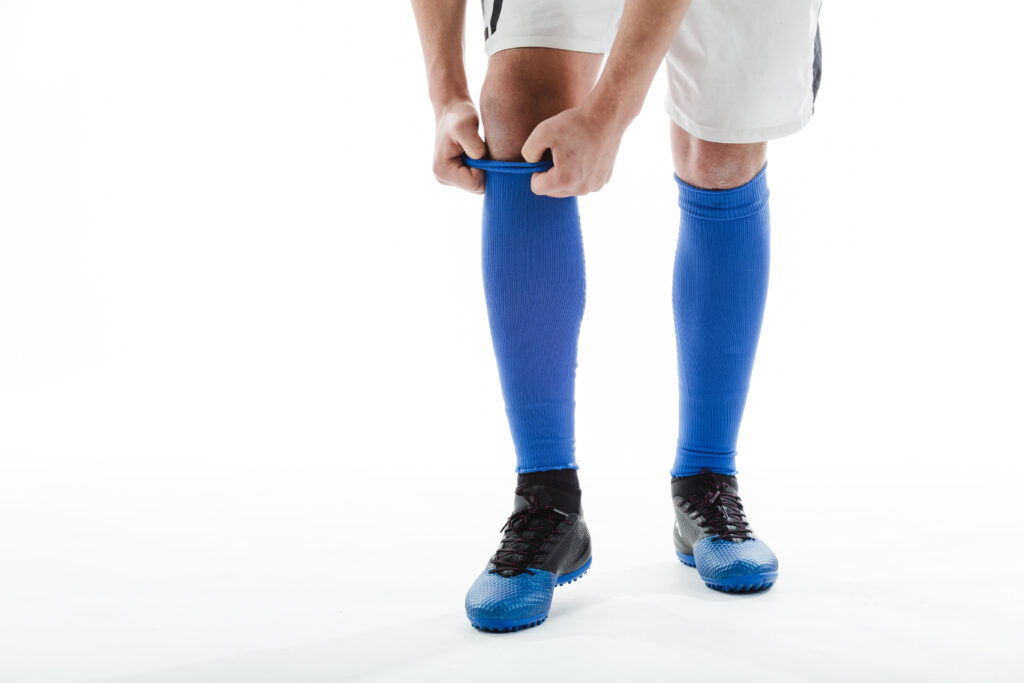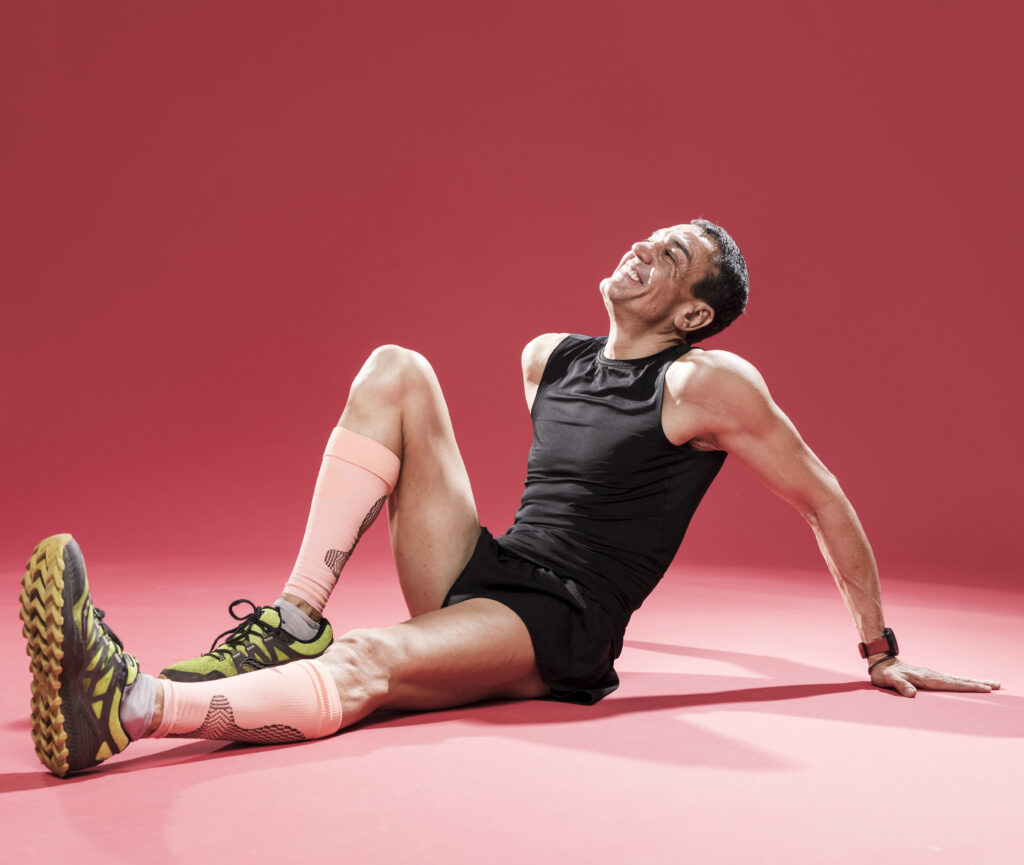Are Compression Socks Worth It for Recovery?
Compression socks have gained popularity among athletes and fitness enthusiasts alike as a recovery tool. They are touted to improve circulation, reduce muscle soreness, and accelerate recovery post-exercise. But are they truly effective? Let’s dive into the research, the differences between short and long compression socks, and how to use them for optimal results.
The Science Behind Compression Socks
Compression socks apply graduated pressure to the legs, promoting better blood flow and reducing venous pooling. By improving circulation, these socks facilitate the delivery of oxygen and nutrients to muscles while aiding the removal of metabolic waste, such as lactic acid, that builds up during exercise.
A systematic review published in the British Journal of Sports Medicine (2016) found that wearing compression garments, including socks, modestly improved recovery markers such as muscle strength and delayed onset muscle soreness (DOMS). The benefits were more pronounced when garments were worn for at least 24 hours after exercise.
Another study in the Journal of Sports Sciences (2018) highlighted that compression socks could reduce post-exercise swelling and perceived muscle soreness, particularly after endurance activities like running. However, the research also notes variability in individual responses and stresses the importance of proper fit and pressure levels.
Short vs. Long Compression Socks
The choice between short (ankle-length) and long (knee-high) compression socks depends on your needs:
- Short Compression Socks
- Target the foot and lower calf.
- Ideal for localized discomfort or swelling in the ankle area.
- Suitable for activities like walking or light running.
- Long Compression Socks
- Cover the entire lower leg, providing comprehensive support to calves.
- Beneficial for endurance athletes and those recovering from high-intensity activities.
- May be more effective in promoting blood flow back to the heart.
A 2019 study in the European Journal of Applied Physiology found that long compression socks were more effective at reducing muscle soreness and enhancing recovery compared to short ones, especially after prolonged physical activity.
Choosing the Right Compression Level
Compression levels are measured in millimeters of mercury (mmHg), which indicates the pressure applied. For recovery purposes:
- 20-30 mmHg is the most common and effective range for athletes. It offers enough compression to enhance recovery without being too restrictive.
- Higher levels (30-40 mmHg) may be appropriate for medical conditions or severe swelling but should only be used under medical supervision.
How Long Should You Wear Them?
The optimal duration for wearing compression socks depends on your recovery goals:
- Post-Exercise: Wear them for at least 2–4 hours after exercise to reduce muscle soreness and swelling.
- Prolonged Recovery: Some studies suggest wearing them for up to 24 hours post-exercise for maximum benefit.
- Daily Wear: If you’re on your feet all day or have a physically demanding job, wearing them throughout the day can help.

What You Should Know Before Using Compression Socks
- Proper Fit Is Crucial
Ill-fitting socks can cause discomfort and may not deliver the desired benefits. Measure your calf circumference and shoe size to select the right size. - Start with Moderate Compression
If you’re new to compression socks, begin with the 20-30 mmHg range to assess your comfort level. - Don’t Overuse
Avoid wearing compression socks while sleeping unless recommended by a healthcare provider. This could lead to reduced circulation if worn improperly. - Clean and Maintain
Regularly wash your socks to maintain their elasticity and ensure hygiene. - Consult a Professional
If you have underlying medical conditions such as peripheral artery disease, consult your doctor before using compression socks.
Are Compression Socks Worth It?
The answer largely depends on your activity level and recovery needs. While compression socks are not a miracle cure, scientific evidence supports their use as an effective recovery tool for reducing muscle soreness, improving circulation, and promoting recovery.
For most people, investing in a pair of well-fitted, knee-high compression socks, with a 20-30 mmHg compression level, is a practical and beneficial first step. Combine them with proper hydration, nutrition, and rest for a comprehensive recovery strategy.
Final Thoughts
Compression socks are more than just a trendy accessory; they are a scientifically-backed recovery aid when used correctly. Whether you’re an athlete recovering from a marathon or someone dealing with daily fatigue from standing or sitting for long hours, these socks could make a noticeable difference in how your legs feel and recover.
By understanding the science, selecting the right compression level, and wearing them for the recommended duration, you can maximize the benefits of compression socks. So, are they worth it? For most people, the answer is a resounding yes!
References
- MacRae, B. A., Cotter, J. D., & Laing, R. M. (2016). Compression garments and exercise: a meta-analysis of the research. British Journal of Sports Medicine.
- Born, D. P., Sperlich, B., & Holmberg, H. C. (2018). Bringing light into the dark: effects of compression clothing on performance and recovery. Journal of Sports Sciences.
- Engel, F. A., Holmberg, H. C., Sperlich, B. (2019). Is there evidence that compression garments improve muscle recovery after exercise? A systematic review. European Journal of Applied Physiology.
Stay Strong Together
If you’re serious about nutrition, building muscle and reaching your fitness goals in 2025, then the Jefit app is the perfect tool to help get you there! With over 20 million downloads and more than 12 million bodybuilders using the app to track their workouts, Jefit is the ultimate strength training companion. Rated as the 2024 Best App and featured by top publications like Men’s Health, PC Magazine, and USA TODAY. Jefit boasts 42,000+ five-star ratings for its user-friendly design and comprehensive features. Whether you’re focused on protein intake, building strength, or tracking your progress, Jefit has everything you need to succeed. Download Jefit today and join millions of fitness enthusiasts transforming their bodies!
- Fibermaxxing: Viral Nutrition Trend You Should Know - December 17, 2025
- Hybrid Metabolic Strength Training for Faster Results - December 10, 2025
- Why Lifters Choose JEFIT App for Real Strength Gains - December 3, 2025
